
Mixpanel vs. Kissmetrics: Insights for Product Adoption

by
Wiktoria Slowikowska
Oct 29, 2024
Identify and convert your most valuable users
Sign Up
When it comes to driving product adoption, understanding user behavior is key. Both Mixpanel and Kissmetrics are powerful tools in the analytics space, helping companies uncover insights that can improve product adoption rates, retain users, and optimize the product experience.
However, these platforms have distinct approaches, strengths, and pricing models. Here, we’ll dive into a side-by-side comparison of Mixpanel and Kissmetrics, focusing on product adoption features, usability, and pricing.

Let’s explore which of these two platforms might best suit your business.
Overview of Mixpanel and Kissmetrics
Mixpanel specializes in event-based analytics, giving teams a granular understanding of user behaviors. With its intuitive UI, Mixpanel provides insight into how users interact with specific features, helping teams identify barriers to product adoption.
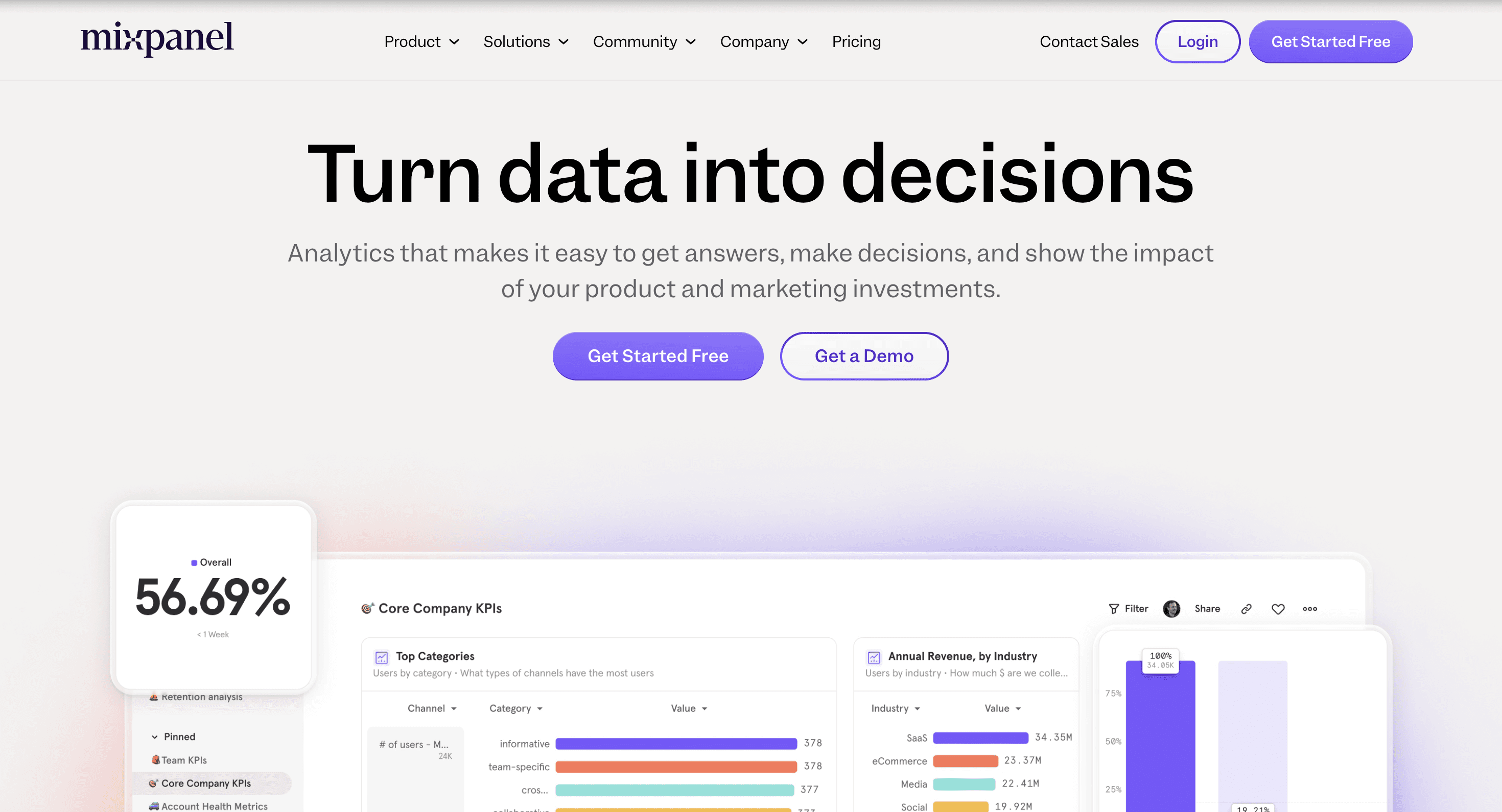
Kissmetrics, while traditionally geared toward funnel analysis, also enables companies to understand customer journeys and conversion rates. Kissmetrics is particularly known for its focus on customer engagement and retention, allowing companies to identify and target different user segments for increased product adoption.
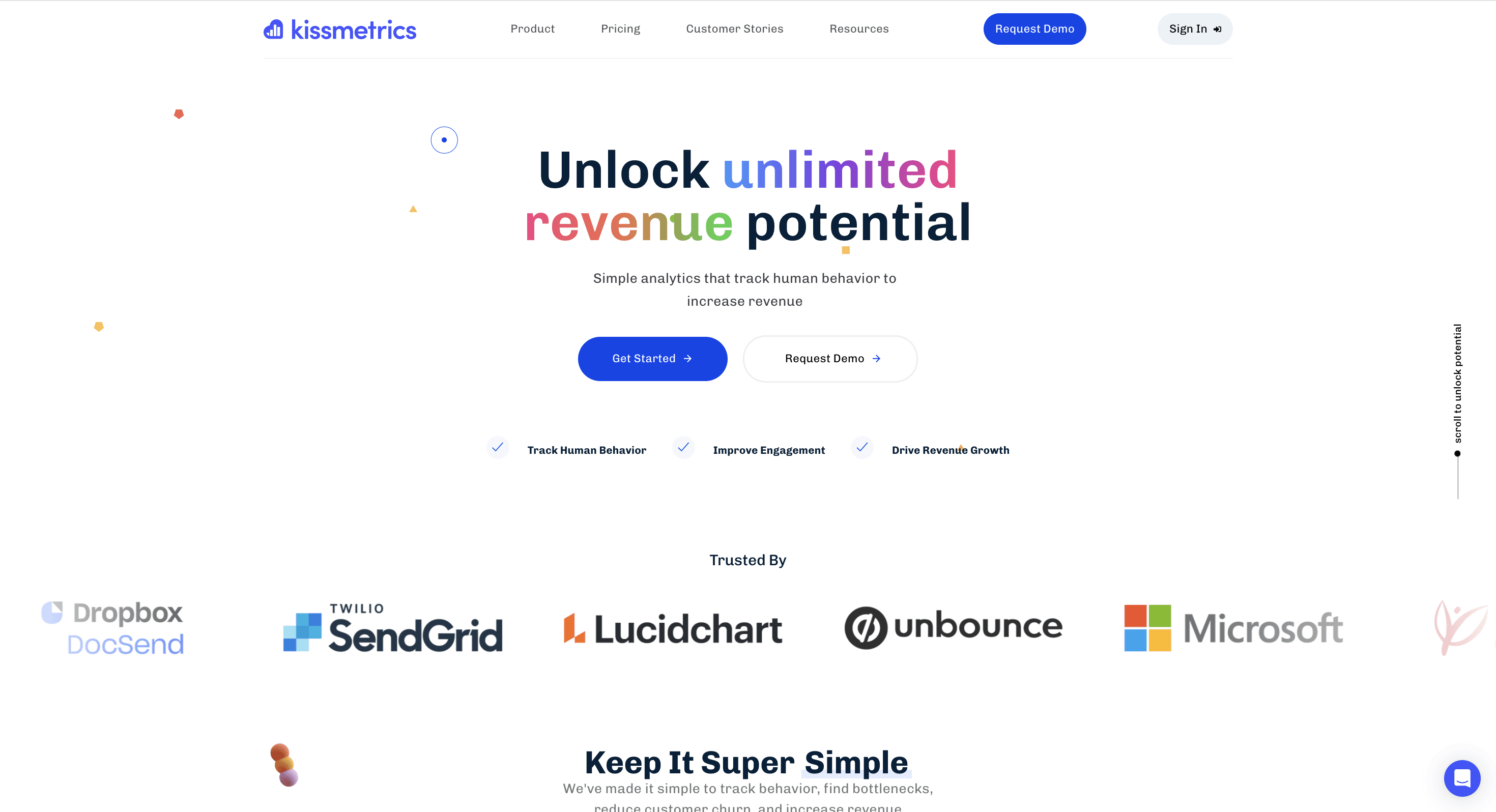
Key Features Comparison: Focused on Product Adoption
Let’s break down the key features for product adoption in both Mixpanel and Kissmetrics:
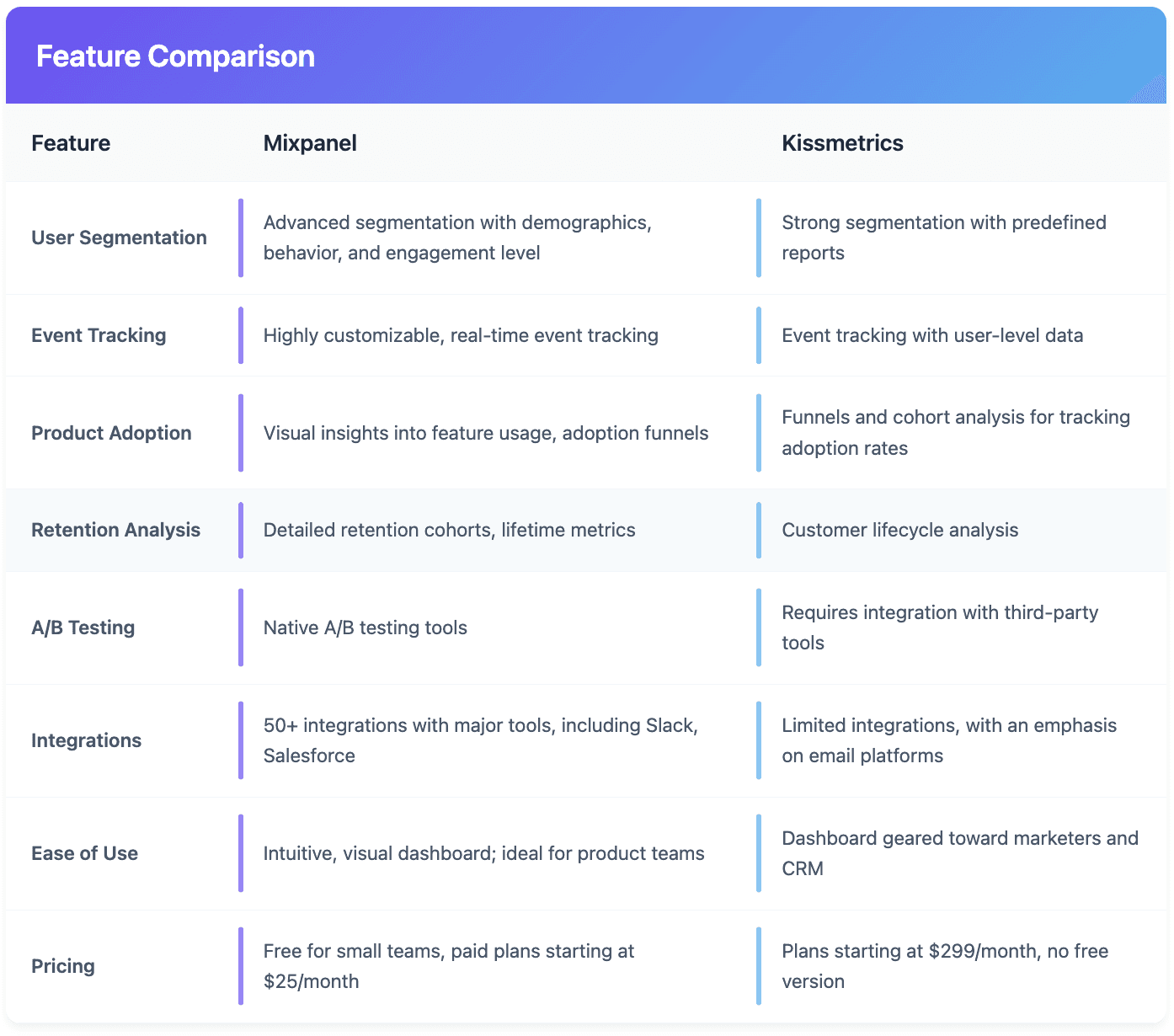
1. User Segmentation and Targeting
Mixpanel offers in-depth user segmentation based on behavioral data. For product adoption, this means you can group users by how often they use a specific feature, how frequently they log in, and even how they progress through onboarding. Mixpanel’s segmentation is particularly useful for understanding which features users engage with the most—and which may need improvements to encourage adoption.
Kissmetrics, while also offering segmentation, relies on a more predefined reporting system that doesn’t offer as much flexibility as Mixpanel. However, Kissmetrics’ focus on user-level tracking can help teams understand customer lifecycle stages and target users with specific messages aimed at increasing product usage.
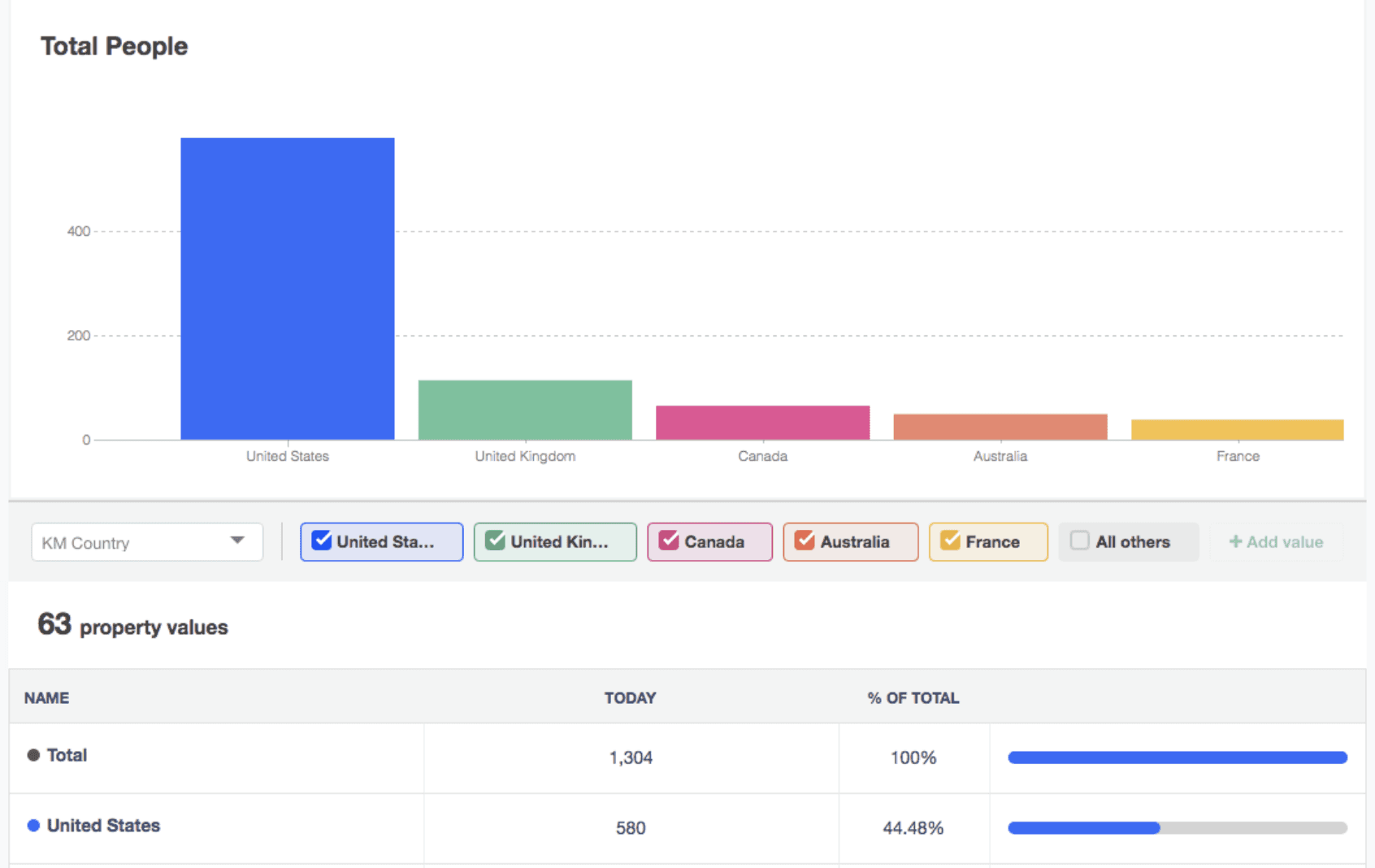
Takeaway: For product adoption, Mixpanel’s segmentation is more flexible, offering better insights into user engagement with specific features.
2. Event Tracking and Analysis
Event tracking is at the core of understanding user behavior.
Mixpanel uses event-based tracking, allowing companies to see the exact actions users take within a product. For example, you can track when a user clicks on a certain feature, when they stop using it, and how these behaviors affect overall product adoption. Mixpanel’s real-time insights and clear data visualization make it a favorite among product teams looking to drive feature engagement.
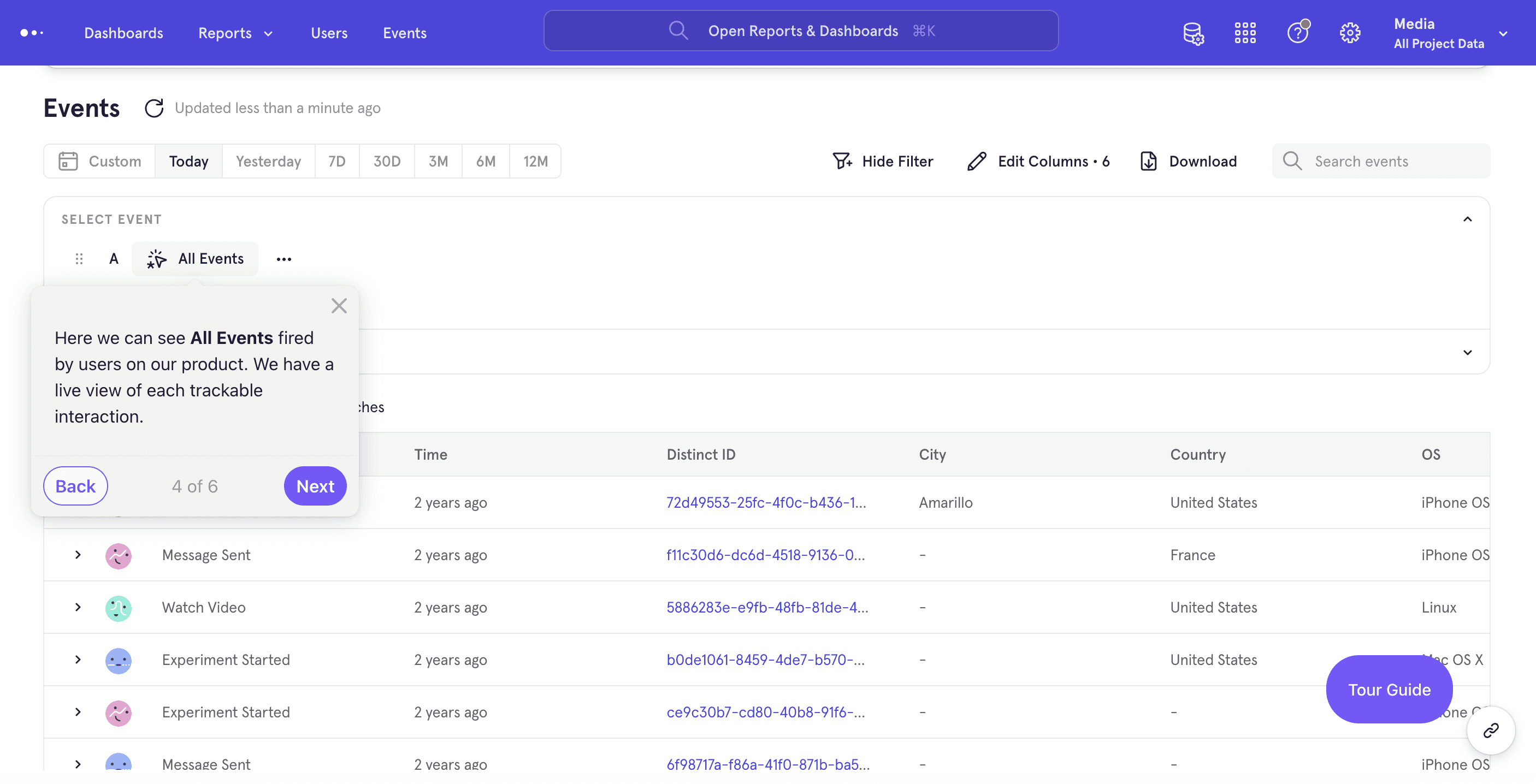
Kissmetrics also provides event tracking but is slightly less customizable. Kissmetrics focuses more on customer-level data, showing how individual users or segments interact with the product over time. This approach is more suited to understanding engagement trends rather than tracking real-time feature use.
Takeaway: For product teams focusing on tracking and iterating on feature usage, Mixpanel provides a clearer, more actionable view.
3. Product Adoption Analytics and Cohorts
Tracking product adoption requires monitoring feature use, onboarding progress, and user retention over time.
Mixpanel shines with its dedicated product adoption analysis tools, which visualize how users progress through onboarding, where they might drop off, and which features gain traction. Mixpanel also offers funnel and cohort analysis, showing where users abandon the product and how certain changes impact adoption rates.
Kissmetrics provides solid cohort analysis but is generally better suited for examining customer lifecycle stages. While useful for tracking overall product adoption, Kissmetrics’ cohort analysis is less customizable than Mixpanel’s, making it harder to track detailed feature-specific adoption.
Takeaway: For a granular view of feature adoption, Mixpanel’s adoption and cohort tools are more powerful.
4. Retention and User Journey Mapping
Mixpanel has an intuitive retention analysis dashboard that allows you to track and understand how users return to your product over time. This is invaluable for product adoption as it shows where users find value and what motivates repeat interactions. By creating custom retention cohorts, product teams can identify which features keep users engaged.
Kissmetrics has a retention tool that focuses more on lifecycle marketing, giving marketers insight into where users stand in their journey. This can be beneficial for engagement campaigns but is less flexible for tracking retention at the feature level.
Takeaway: Mixpanel offers better feature-specific retention tools, which are essential for understanding and improving product adoption.
5. A/B Testing and Experimentation
Experimentation is key to optimizing product adoption.
Mixpanel comes with built-in A/B testing, enabling product teams to test different feature versions and quickly understand how changes impact adoption. This capability lets teams iterate quickly and improve product experience based on real-time user data.
Kissmetrics does not have a native A/B testing feature, so users need to integrate third-party tools. While this can work, it adds complexity and may limit the frequency of testing.
Takeaway: If A/B testing is central to your strategy, Mixpanel’s built-in testing tools make it a more effective choice.
Pricing
Pricing is a crucial factor for businesses of all sizes. Here’s a quick look at the pricing models of Mixpanel and Kissmetrics:
Mixpanel offers a free plan with limited features, which is ideal for small teams starting with product analytics. Paid plans start at $25/month, scaling based on event volume and access to more advanced features. Mixpanel’s flexible pricing allows smaller teams to try out the platform before committing to a larger plan.
Kissmetrics does not offer a free plan. Their pricing starts at $299/month, which includes the full suite of customer journey and lifecycle analytics. Kissmetrics targets mid-sized to large businesses that need in-depth customer lifecycle data rather than specific feature usage.
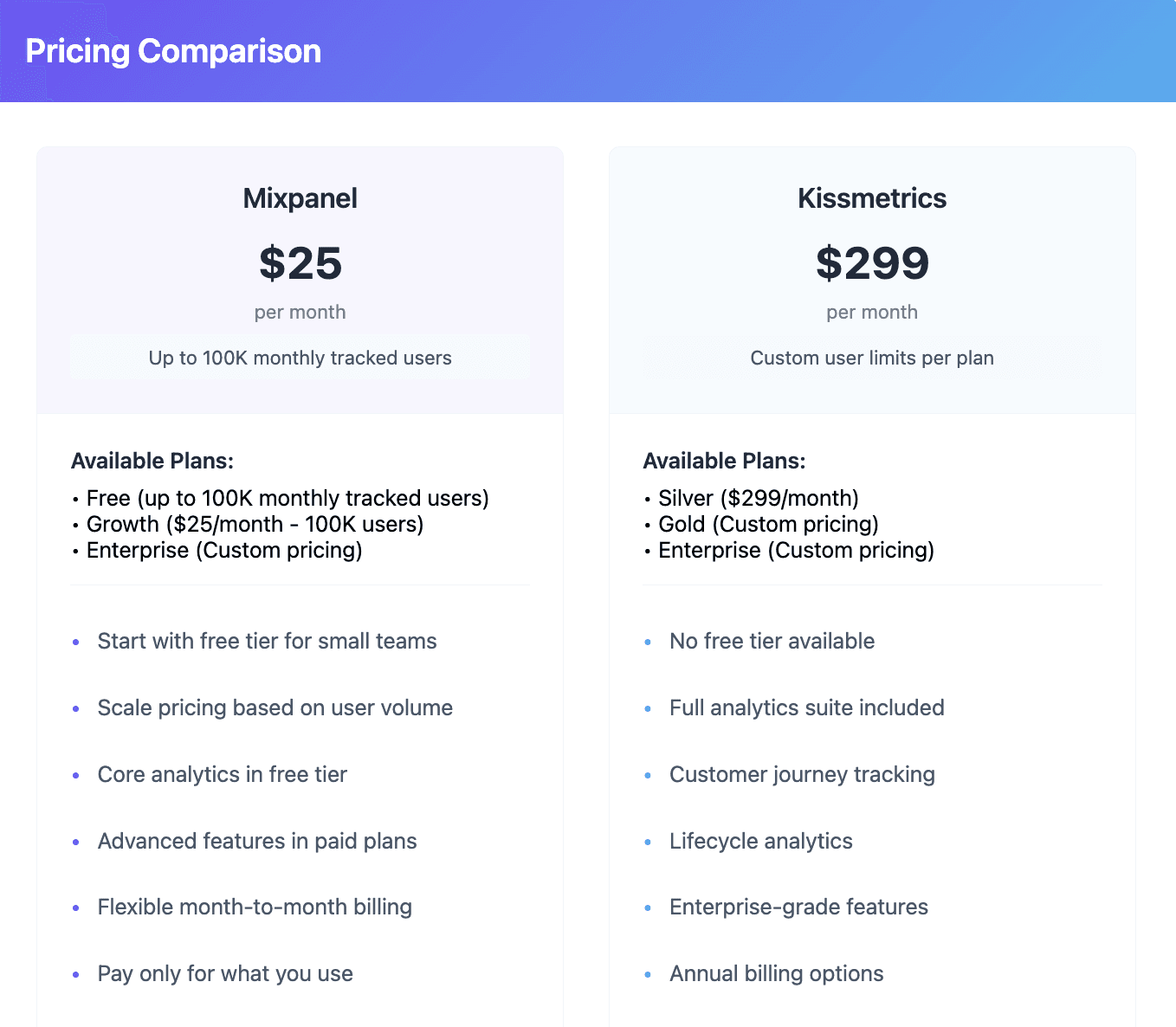
Takeaway: For startups or small teams focused on product adoption, Mixpanel offers more affordable and flexible pricing options.
Which Platform Is Right for You?
Choose Mixpanel if:
You’re focused on product adoption and want detailed insights into feature usage.
You need flexible user segmentation and real-time event tracking.
A/B testing is a priority in your product optimization strategy.
You’re working within a smaller budget or prefer a scalable pricing plan.
Mixpanel reviews:

Choose Kissmetrics if:
Your primary focus is on the customer lifecycle and overall engagement rather than specific feature adoption.
You need robust cohort analysis and customer segmentation for targeted engagement campaigns.
Your team is more focused on marketing and CRM rather than specific product features.
You have the budget for a more comprehensive, higher-cost analytics tool.
Kissmetrics Reviews:
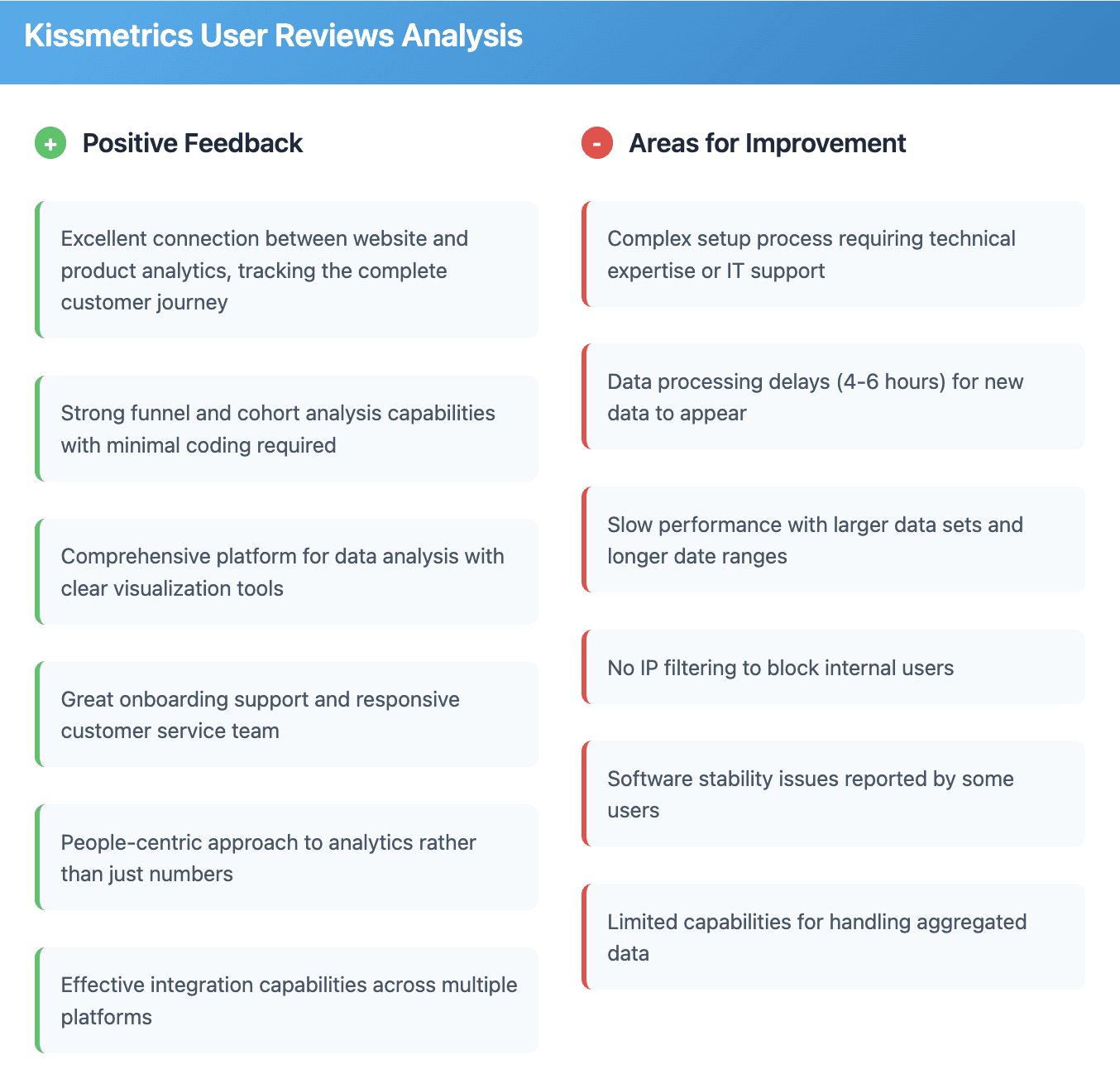
Conclusion
Both Mixpanel and Kissmetrics have their strengths, but when it comes to driving product adoption, Mixpanel generally provides a more actionable view of user behavior and feature engagement. Mixpanel’s flexibility in tracking and analyzing specific actions within a product, combined with its accessible pricing, makes it an ideal tool for product teams dedicated to improving adoption rates. Kissmetrics, however, remains a powerful option for those looking to deepen lifecycle insights, target specific customer segments, and drive engagement.
Whichever platform you choose, leveraging the right analytics tools can help you make data-driven decisions, refine your product, and ultimately drive higher adoption and user satisfaction.




